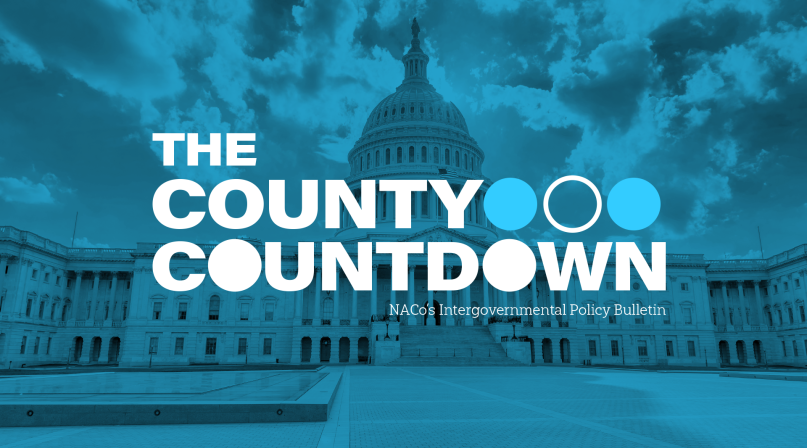County Countdown – June 30, 2025
Upcoming Events
Related News

Every other week, NACo's County Countdown reviews top federal policy advocacy items with an eye towards counties and the intergovernmental partnership.
Senate reconciliation proposal shifts costs to counties
The Senate is now considering the House-passed reconciliation bill, which includes harmful cost shifts for counties, particularly those administering the Supplemental Nutrition Assistance Program (SNAP) and contributing to Medicaid.
- SNAP and Medicaid impacts: Counties in 10 states could be forced to cover more than $850 million annually in additional SNAP costs, while reduced Medicaid matching funds could devastate state budgets in 24 states and the District of Columbia.
- Key advocacy points: NACo is pushing to preserve tax-exempt municipal bonds, oppose a 10-year AI moratorium that limits local authority and prevent cost shifts that could force counties to cut services or raise taxes.
Local governments request DHS transparency on sanctuary designations
NACo, the International Municipal Lawyers Association and the National League of Cities sent a joint letter to the Department of Homeland Security (DHS) and Department of Justice (DOJ) urging clarity on how sanctuary jurisdictions are designated.
- Flawed rollout: DHS initially released a list of nearly 400 counties before removing it June 1, with no updates since.
- What counties want: The coalition is requesting clear criteria, an appeals process and guidance on how existing court orders are considered in federal decisions.
NACo launches tracker for federal funding freezes
NACo’s new Federal Funding Freeze Tracker documents the real-time impact of executive orders on county programs and infrastructure investments.
- Wide-ranging effects: The freeze jeopardizes USDA support for rural communities and funding for essential infrastructure, including roads and bridges.
- Supporting county planning: The tracker helps counties understand where federal revenue is at risk and how to plan for service delivery changes.
Orders to expand nuclear energy highlight county role
President Trump signed four executive orders to rapidly expand U.S. nuclear energy capacity, with counties playing a central role in future siting and permitting.
- National targets: The orders aim to grow capacity from 100 to 400 gigawatts and deploy reactors on military bases within three years.
- Local input needed: NACo supports nuclear innovation, but counties continue to advocate for clear guidance and a seat at the table to ensure local voices are included in decisions around siting, permitting and regulation of nuclear facilities.
Senate passes Secure Rural Schools; House must follow
The Senate unanimously passed the Secure Rural Schools Reauthorization Act on June 18, providing critical funding to more than 700 forested counties with limited property tax bases.
- Essential support: SRS funds schools, roads, emergency services and forest management in communities where federal lands limit local tax revenue.
- Next step: NACo urges the House to quickly pass this bipartisan legislation to protect basic services in rural America.
Related News

U.S. Department of Agriculture unveils $700 million for regenerative agriculture
On December 10, U.S. Secretary of Agriculture Brooke Rollins announced the launch of a $700 million pilot program to support regenerative agriculture practices across the country.

HHS releases rule repealing federal nursing home staffing mandate, supporting county long term care facilities
On December 2, the U.S. Department of Health and Human Services (HHS) published an interim final rule that repeals the federal nursing home staffing mandate, a regulation that would have required long-term care facilities to meet strict minimum staffing levels.
Stretching small opioid settlement allocations helps funding do more
States and localities are set to receive $56 billion in opioid settlement dollars over an 18-year period, but not every county that receives settlement funding will get enough to build out infrastructure.
Upcoming Events

What to Know Before You Go to NACo’s Legislative Conference
Join NACo’s Membership Chair and staff to learn ways to maximize your experience at the NACo Legislative Conference.




